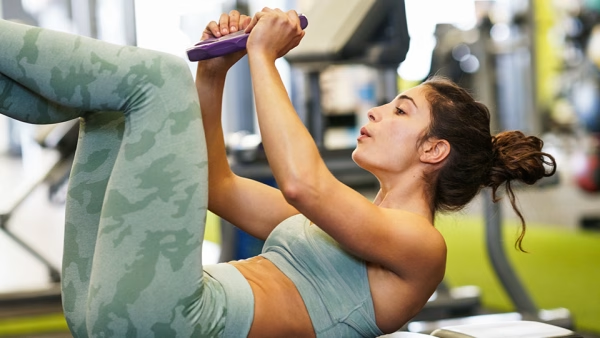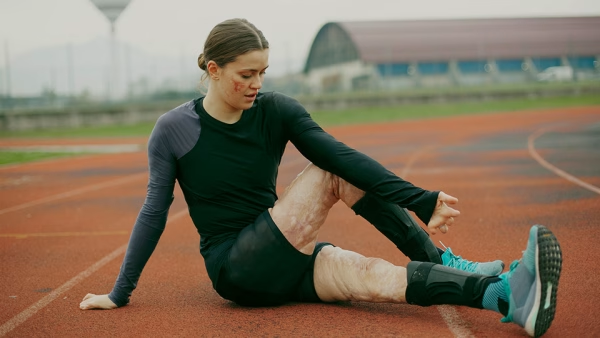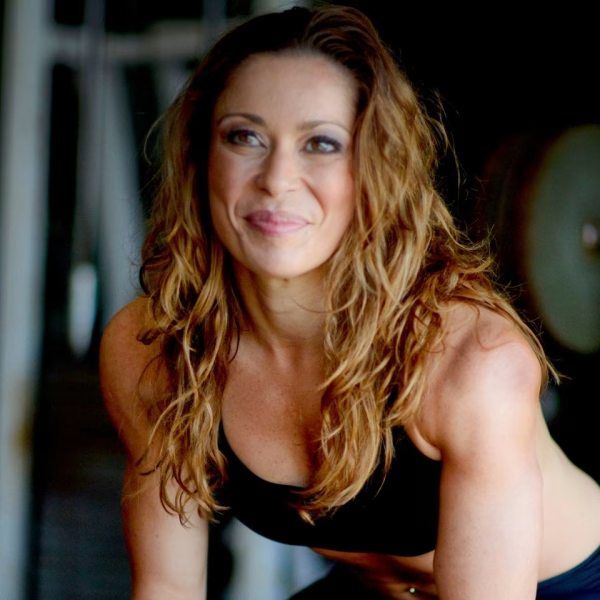Compression wear: What is it meant to do and does it work?
Does compression wear do more than help you look good?


The basics of compression wear
Whether you’re pounding the pavement or going for those gains in the gym, there’s no doubt that doing it in compression wear helps you look sleek – but is this so-called ‘performance gear’ actually helping you?
Compression clothing claims to increase blood flow to working muscles, and improve recovery and performance.
“Compression wear is largely used by athletes who participate in sports, from cycling, running and weight training to rugby, soccer, netball, triathlons and swimming,” says personal trainer Kristy Curtis.
For the same reasons, compression wear has become a fast trend among the rest of us.
“Popularity has grown in recent years and now you see the average gym-goer or weekend warrior also wearing this clothing,” says Kristy.
What does compression wear do for your body?
The theory behind compression wear is simple: it claims to increase our body’s blood circulation, helping ease muscle swelling during and after exercise, explains Kristy. The fabric applies pressure on the surface of particular parts of the body to compress and support the underlying tissue. However, the benefits of compression tights and other garments as functional fitness fashion might have been overstated.
“The theory is that by keeping pressure on a limb, compression wear can improve blood flow back to the heart and decrease swelling from exerted muscle,” explains Kristy.
That might sound great, but the research backing it up is mixed.
What types of compression wear is there?
There is a huge range of athletic compression clothing available including leggings, tights, t-shirts, singlets and long-sleeved tops, socks, gloves, body suits and individual arm and leg sleeves.
There’s also compression wear developed for health reasons, such as to be worn by patients after surgery.

Compression wear: does it work?
If you’re considering buying into the trend, says Kristy, weigh up why you want to wear compression clothing.
“If it’s to decrease chafing then go ahead; there is a level of extra comfort that is provided by wearing compression wear underneath your gym clothes or on their own,” she suggests.
“If you just like the look of these garments, that’s fine also – we all deserve to feel great when we exercise!”
If, on the other hand, you want to wear them for their supposed fitness benefits, Kristy says: “There have been studies around whether compression wear enhances athletic performance, decreases muscle soreness or reduces the risk of injury and the findings for all of these have been inconsistent,” says Kristy. “While there are some mixed reviews for recovery and improved form, there is nothing to definitively suggest that compression wear improves athletic performance.”
What are the pros and cons of wearing compression wear?
Here are Kristy’s tips if you’re weighing up whether compression wear is for you:
Pros
Decreases chafing while running, swimming or cycling
Provides support for joints and ligaments, which may lead to improved form and decreased fatigue in muscles (but again, the research results are mixed and not definitive)
Some positive recovery findings have been noted for improved recovery if worn during weight training
Psychological benefits – people like the way they look in compression garments, which can boost self-confidence.
Cons
There’s no consistent evidence to suggest that compression wear:
Enhances performance in any sport
Helps with delayed onset muscle soreness (DOMS)
Supports injury prevention or
Helps with blood flow to the body.
There is nothing to definitively suggest that compression wear improves athletic performance
Compression wear post-surgery – does it work?
Compression stockings can relieve swelling and pain in the legs for those suffering from thrombosis (when a blood clot forms in a vein or artery) or to prevent the condition after surgery. Swelling following liposuction surgery is often controlled using compression clothing for up to six weeks.
Travellers often wear them on long flights to prevent deep vein thrombosis (DVT).
People diagnosed with lymphoedema (swelling due to blockages in or damages to the lymphatic system) may be told to wear tailored, graduated compression garments to help reduce swelling by stopping fluid from building up and by moving excess fluid out of the affected area.
Compression stockings or bandages are also useful for patients following a common treatment for varicose and spider veins called sclerotherapy (the injection of irritant chemicals into the affected veins). These garments help reduce the risk of bruising, swelling and other complications such as inflammation and clots.
Did you know your workout gear could be working against you? From loose clothing to synthetic fabrics, find out more about the types of activewear that could be bad for your health.
Please note: The tips throughout this article serve as broad information and should not replace any advice you have been given by your medical practitioner.
10 things you didn't know about the nib app
Managing your health cover is easy with the nib app
12 things you can do digitally with your nib membership
12 digital tips to assist you with your nib membership.

Kristy Curtis
Kristy Curtis is one of Australia and Asia’s leading wellness experts. She discovered her passion for fitness at a young age and has since transformed that passion into a career, with a successful personal training business and as a TV presenter. Kristy strongly believes while there are some things in life you can’t control, you can take ownership and responsibility of your health by eating good food, thinking positively and keeping your body moving. Every night before bed, Kristy completes a sudoku puzzle.




